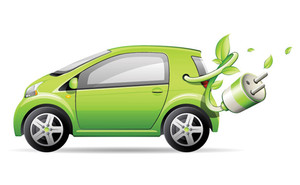WP.29 contributes to mobility electrification
WP.29 developps regulations with technical requirements for the assessment of safety and environmental performance of Electric Vehicles (EV), Hybrid Electric Vehicles (HEV) and Fuel Cells Vehicles (FCV).These regulations encourage the industry to market these technologies, the harmonization of requirements provide a stability and visibility to manufacturers and making these technologies available at a lower price due to economies of scale.

- WP.29 addresses safety risks inherent to these specific technologies such as electric shocks or the fire or explosion due, e.g. in case of a crash, to the EV-batteries or the hydrogen stored in a Fuel Cell Vehicle.
For this purpose, here are some of the relevant Regulations:
- UN Regulation No. 94 (Frontal collision protection)
- UN Regulation No. 95 (Lateral collision protection)
- UN Regulation No. 100 (Electric safety)
- UN GTR No. 20 (Electric Vehicle Safety (EVS))
- UN Regulation No. 136 (Electric powered 2&3 wheelers)
- UN Regulation No. 146 - (Hydrogen and Fuel Cell 2&3 wheelers)
- UN GTR No. 13 (Hydrogen and Fuel Cell Vehicles (HFCV))
- UN Regulation No. 134 (Hydrogen and Fuel Cell Vehicles (HFCV))
- UN Regulation No. 153 (Fuel system integrity and electric power train safety at rear-end collision)
- WP.29 also addressed other safety aspects such as:
- Electromagnetic Compatibility (EMC) - see UN Regulation No. 10; or
- Quiteness of these vehicles at low speed esp. for VRU - See UN Regulation on QRTV.
- WP.29 reviewed its regulations on the evaluation of their environmental performance by introducing specific testing procedures for:
- Evaluation of the EV-mode range and its impact in the test cycle (NEDC, WLTC)
- The preconditioning of EV and HEV (NEDC, WLTC)
- Exemption for FCV
- Hardware In the Loop Simulation (HILS) for HEV trucks (in UN GTR No. 4)
- Phase II of WLTP (see UN GTR No. 15)
WP.29 | Q&A | Meetings | Regulations | Publications